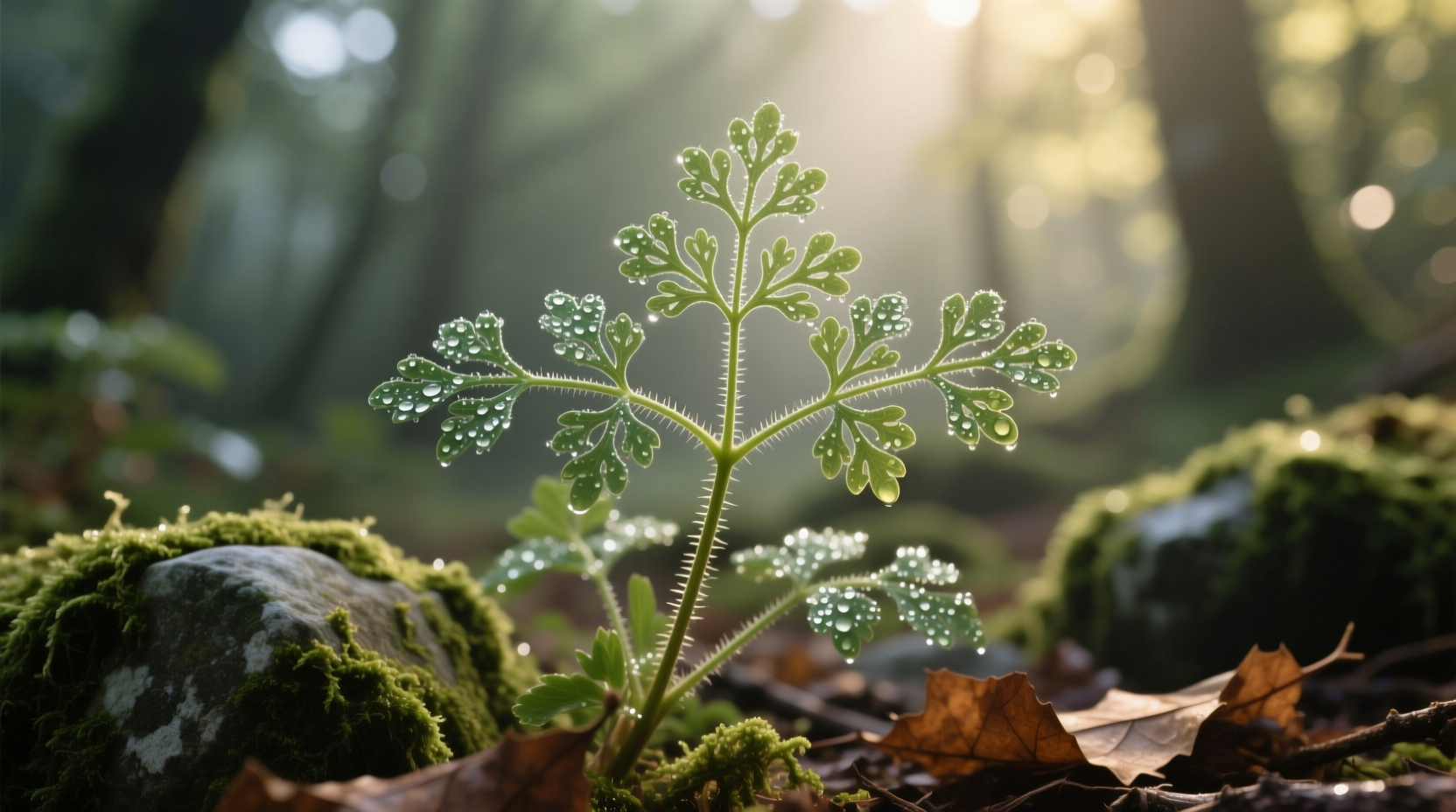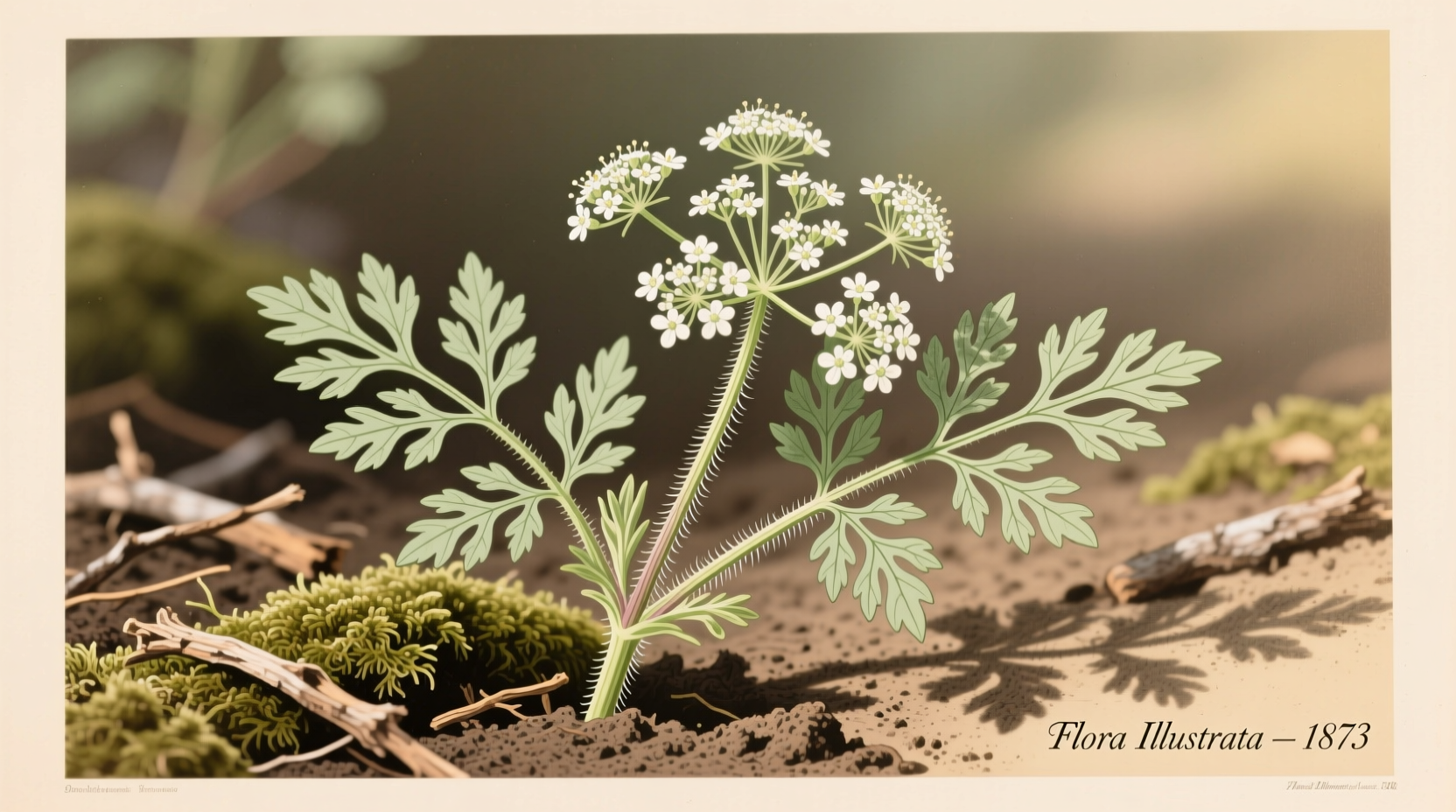Spreading hedge parsley (Torilis japonica) is a non-edible, invasive plant often mistaken for culinary parsley. Unlike the parsley you cook with, this species contains toxic compounds that can cause severe skin reactions when exposed to sunlight. It's classified as a noxious weed in 15 U.S. states and requires careful identification to prevent accidental contact or ingestion.
Discovering an unfamiliar plant in your garden or on a hike can spark curiosity, but mistaking spreading hedge parsley for its edible cousin could have serious consequences. This comprehensive guide provides the critical identification markers, safety precautions, and management strategies you need to protect yourself and your local ecosystem. Within minutes, you'll learn to distinguish this invasive species from culinary parsley with confidence.
What Exactly Is Spreading Hedge Parsley?
Spreading hedge parsley (Torilis japonica), also known as Japanese hedge parsley, belongs to the Apiaceae family—the same botanical family as carrots, celery, and culinary parsley. Native to Europe and Asia, this biennial plant has become an aggressive invader across North America since its introduction in the 1960s. Unlike the parsley you find in grocery stores (Petroselinum crispum), spreading hedge parsley serves no culinary purpose and poses significant ecological and health risks.
The plant typically grows 1-3 feet tall with finely divided, fern-like leaves that resemble culinary parsley at first glance. Its small white flowers form in umbrella-shaped clusters (umbels) during late spring to early summer, followed by distinctive bristly seed pods that easily attach to clothing and animal fur for dispersal. The stems feature fine hairs and often develop a reddish-purple hue as the plant matures.

Why Confusion With Culinary Parsley Is Dangerous
Mistaking spreading hedge parsley for edible parsley represents a serious health hazard. This invasive species contains furanocoumarins—photosensitizing compounds that cause phytophotodermatitis when skin接触 is followed by sun exposure. This reaction creates painful, blistering rashes that can last for weeks and may leave permanent discoloration.
| Feature | Spreading Hedge Parsley | Culinary Parsley |
|---|---|---|
| Stem Texture | Hairy with reddish streaks | Smooth, solid green |
| Leaf Structure | Finely divided, lacy appearance | Broad, flat leaflets |
| Flower Clusters | Small, loose umbels | Larger, more compact umbels |
| Seed Pods | Bristly, hook-covered | Smooth, oval-shaped |
| Scent When Crushed | Musty, unpleasant odor | Distinctive parsley aroma |
Ecological Impact and Spread Timeline
First documented in North America in 1964 near Toronto, spreading hedge parsley has rapidly expanded its territory across the eastern and midwestern United States. According to the USDA Plants Database, it's now established in 32 states and listed as a noxious weed in Illinois, Indiana, Michigan, Minnesota, and Wisconsin, with additional states considering similar designations.
This invasive species outcompetes native vegetation through several mechanisms:
- Produces up to 1,500 seeds per plant that remain viable for 5+ years
- Forms dense stands that block sunlight from reaching native seedlings
- Alters soil chemistry to inhibit growth of competing plants
- Lacks natural predators in non-native environments
The Midwest Invasive Plant Network documents its spread pattern: from initial urban corridor introductions in the 1970s-80s, it moved into forest edges by the 1990s, and now penetrates deep into woodland interiors. This progression follows a predictable timeline where infestations double in size approximately every 3-5 years without intervention.
Safe Identification Protocol for Outdoor Enthusiasts
When encountering unfamiliar plants in the wild, follow this systematic identification process to avoid dangerous mistakes:
- Observe from a distance first - Note overall growth habit and flower structure without touching
- Check stem characteristics - Look for the distinctive hairy texture and reddish streaks
- Examine leaf arrangement - Spreading hedge parsley has alternate leaves with deeply dissected segments
- Inspect seed pods - Mature plants display bristly pods with tiny hooks
- Perform scent test cautiously - If necessary, crush a small leaf fragment with a stick (never fingers) and smell from a distance
Remember that young plants before flowering are most easily confused with edible varieties. When in doubt, follow the universal rule for foraging: "When uncertain, leave it." The University of Wisconsin-Madison Extension emphasizes that no visual identification method is 100% reliable—when safety is concerned, consult a certified botanist.
Proper Management and Removal Techniques
If you discover spreading hedge parsley on your property, immediate action prevents further spread. Follow these science-based removal protocols from the USDA Natural Resources Conservation Service:
Small Infestations (Under 10 plants)
Wear waterproof gloves, long sleeves, and eye protection before beginning work. Remove plants by hand-pulling when soil is moist, ensuring complete root extraction. Place all plant material in sealed black plastic bags and dispose of in household trash—never compost invasive species. Monitor the area for two consecutive growing seasons for regrowth.
Larger Infestations
For established populations, combine methods:
- Mow before flowering (late spring) to prevent seed production
- Apply targeted herbicide containing triclopyr in early spring
- Replant with competitive native species like goldenrod or aster
- Use landscape fabric for at least two growing seasons to prevent regrowth
Always check with your state's Department of Natural Resources before applying herbicides, as regulations vary by location. The Midwest Invasive Species Information Network recommends treating infestations in early spring when the plant is most vulnerable and native species are still dormant.
What to Do After Contact
If you suspect contact with spreading hedge parsley, immediate action minimizes health risks:
- Wash affected skin thoroughly with soap and cold water
- Avoid sun exposure for at least 48 hours
- Apply cool compresses to reduce inflammation
- Monitor for blistering or severe redness
- Seek medical attention if symptoms worsen
The American Academy of Dermatology reports that phytophotodermatitis symptoms typically appear 24-48 hours after exposure and may include linear streaks of blisters matching the plant's contact pattern. Unlike poison ivy, this reaction doesn't involve an allergic response but rather a chemical burn intensified by UV light.
Reporting New Infestations
Citizen scientists play a crucial role in tracking invasive species spread. When you discover spreading hedge parsley outside known infestation areas:
- Capture clear photos of leaves, stems, flowers, and habitat
- Note GPS coordinates using a smartphone app
- Report through the EDDMapS (Early Detection & Distribution Mapping System) platform
- Contact your county's agricultural extension office
These reports help conservation agencies allocate resources effectively and contain new outbreaks before they become unmanageable. The National Park Service credits citizen reporting with preventing several potential infestations from establishing in protected areas over the past decade.











 浙公网安备
33010002000092号
浙公网安备
33010002000092号 浙B2-20120091-4
浙B2-20120091-4